Lose yourself in the enigmatic world of Biblical riddles, where ancient mysteries and divine secrets beckon the curious soul to explore deeper.

Riddles in the Bible
Imagine walking through a dense, ancient forest where every tree whispers secrets from millennia past. You're about to embark on a journey through the Bible, not just as a sacred text, but as a treasure trove of riddles and mysteries waiting to be unraveled.
From Samson's enigmatic lion to the cryptic parables of Jesus, these stories aren't just for reflection—they're puzzles that invite you to engage, question, and interpret. As you stand at the threshold of this forest, remember that each step deeper brings you closer to hidden truths that have puzzled scholars and believers alike for centuries.
Why do these riddles exist, and what secrets do they conceal?
Key Takeaways
- Biblical riddles, like Samson's, often carry deeper symbolic meanings related to divine intervention and the complexities of life.
- The ability to solve or interpret riddles and dreams, as seen with Solomon and Daniel, signifies wisdom and a connection to the divine.
- Riddles in the Bible can serve as parables, offering insights into spiritual truths and moral lessons on topics such as forgiveness and growth.
- Understanding the cultural and historical context is essential for deciphering the allegorical meanings behind biblical riddles and their teachings.
The Enigma of Samson's Lion

Delving into the enigma of Samson's lion, we find a narrative rich with symbolic depth and theological implications. The episode, as recounted in the Book of Judges, serves not only as a testament to Samson's physical prowess but also as a vessel for profound symbolic and theological exploration. Lion symbolism, deeply embedded in ancient cultures, often represents strength, authority, and courage. In Samson's context, the lion's defeat underscores his role as a divinely chosen deliverer, embodying God's power over seemingly insurmountable forces.
The riddle purpose, derived from this encounter, extends beyond a mere display of wit. It encapsulates a deeper, spiritual message, inviting contemplation on the mysteries of divine intervention and human destiny. The riddle, 'Out of the eater, something to eat; out of the strong, something sweet,' mirrors life's paradoxes and the unexpected sources of blessings amidst trials. This narrative layer not only enriches the story's theological dimensions but also highlights the intricate relationship between divine providence and human action.
Analyzing this segment within the broader tapestry of biblical narratives, one can't help but appreciate its role in illustrating the complexity of human-divine interaction. The lion's defeat and the subsequent riddle aren't arbitrary; they're emblematic of the trials and triumphs that define the human experience. Through this lens, Samson's story transcends its historical and cultural confines, offering timeless insights into faith, resilience, and the quest for understanding beyond the surface.
Solomon's Wisdom Unveiled
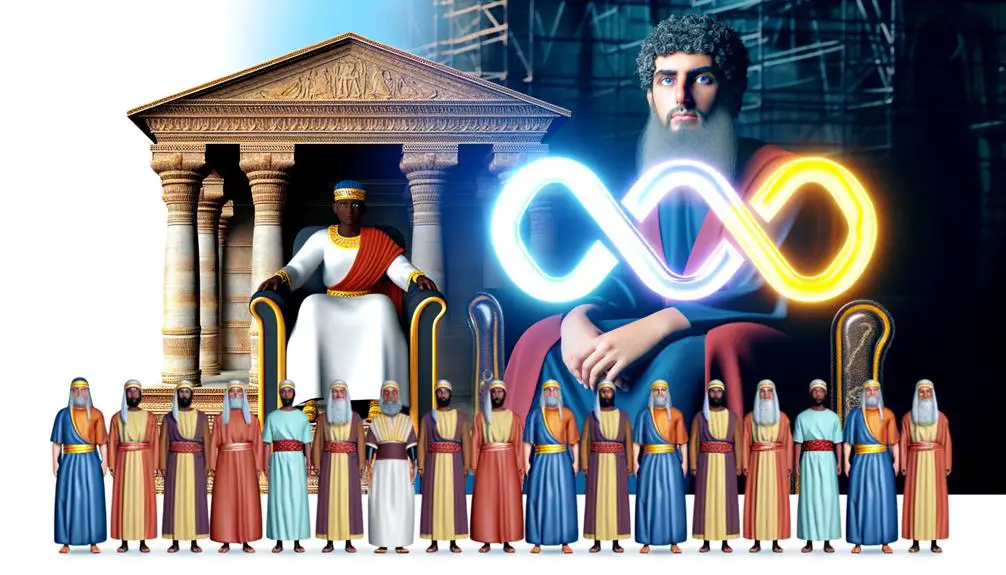
Exploring further into the realm of biblical enigmas, Solomon's wisdom stands as a testament to divine insight and human sagacity. Renowned for his discernment, Solomon's interactions with the Queen of Sheba and his monumental accomplishment, the Temple construction, offer profound insights into his intellectual and spiritual depth.
The Queen of Sheba, intrigued by Solomon's fame, tested him with riddles and questions. Solomon's ability to answer them not only demonstrated his wisdom but also his capacity to understand and interpret the complexities of human experience and the divine. This encounter underscores the importance of wisdom in discerning truth and fostering international relationships.
Temple construction, another testament to Solomon's wisdom, symbolizes a zenith of spiritual and national identity for Israel. Its intricate design and construction reflect Solomon's understanding of divine instructions and his ability to mobilize resources and people for a grand spiritual purpose.
Aspect |
Significance |
Reflection of Wisdom |
|---|---|---|
Queen of Sheba |
Tested Solomon's wisdom through riddles |
Demonstrates intellectual prowess |
Temple Construction |
Symbolizes the culmination of Israel's spiritual and national identity |
Shows organizational and spiritual insight |
Divine Insight |
Ability to interpret and implement God's instructions in life and governance |
Reflects a deep connection with the divine |
Solomon's wisdom, as unveiled through these narratives, not only solved riddles but also built a lasting legacy. It is a reminder of the power of wisdom to navigate life's complexities with divine guidance and human intellect.
The Parables of Jesus Explained
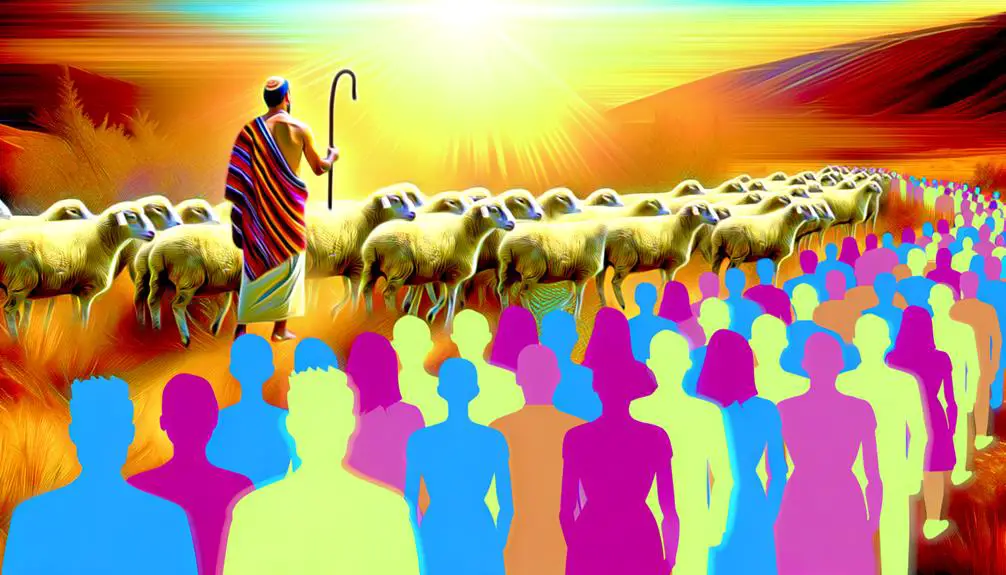
Numerous parables spoken by Jesus serve as profound vehicles for conveying spiritual truths, inviting listeners to delve deeper into their meanings and implications. Among these, the parables of the Lost Coin and the Good Samaritan stand out for their rich symbolism and the moral lessons they impart.
The parable of the Lost Coin, found in the Gospel of Luke, illustrates the joy of rediscovery and the inherent value of every individual to God. It tells the story of a woman who loses one of her ten silver coins and searches diligently until she finds it, then celebrates its recovery. This parable emphasizes God's persistent love and the joy in heaven over one sinner who repents. It's a reminder that you're never too lost to be found and valued by God.
On the other hand, the parable of the Good Samaritan, also in Luke, challenges societal norms and prejudices by depicting a Samaritan—who would have been considered an outsider and enemy by the Jewish audience—as the protagonist who shows compassion to a beaten and robbed man, while a priest and a Levite pass by without helping. This parable is a call to love beyond boundaries, showing mercy and kindness to all, regardless of their background or status.
Both parables, though simple in their storytelling, reveal deep spiritual insights. They encourage you to reflect on your value to God and your duty to show unconditional love and mercy to others. Jesus' parables serve as timeless reminders of the principles that should guide your life, urging you to look beyond the surface and grasp the spiritual truths they encapsulate.
Daniel's Mysterious Dreams
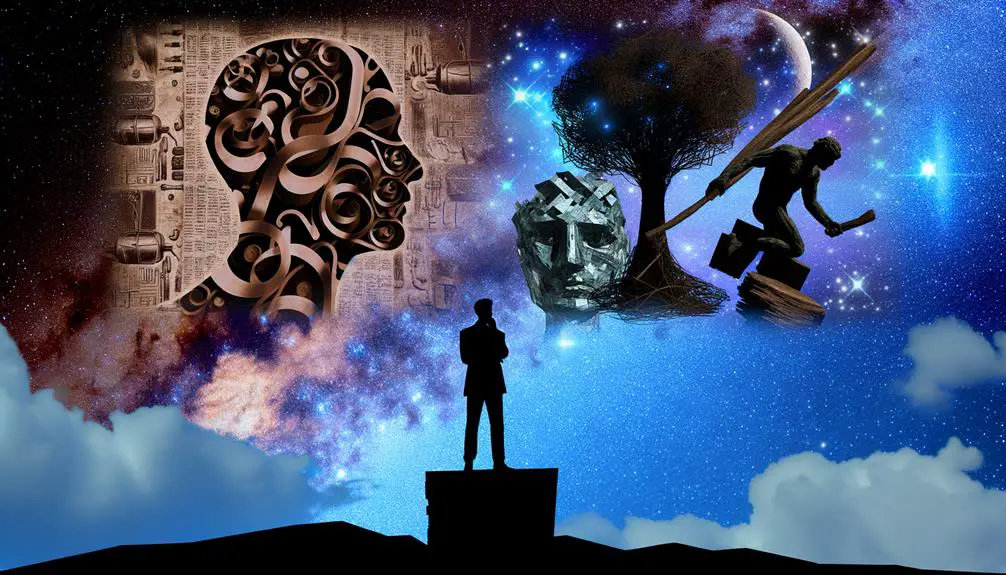
You'll find that Daniel's mysterious dreams, including interpretations of Nebuchadnezzar's dream, the vision of four beasts, and the ram and goat, serve as pivotal elements in biblical prophecy. These narratives not only reflect complex symbolism but also offer insights into historical and eschatological themes.
Analyzing these accounts requires a meticulous examination of their symbolic language and contextual significance within the Book of Daniel.
Interpreting Nebuchadnezzar's Dream
Daniel's interpretation of King Nebuchadnezzar's dream stands as a pivotal moment in biblical narrative, showcasing profound insights into divine prophecy and human destiny. This event intertwines dream interpretation with Babylonian culture, revealing the complexity of understanding dreams within ancient societies.
- Biblical Context: Daniel's role as an interpreter highlights the intersection between divine messages and human affairs.
- Babylonian Culture: The emphasis on dreams reflects the Babylonian belief in divine communication through symbolic visions.
- Symbolic Representation: The dream's imagery serves as metaphors for kingdoms and historical events.
- Divine Wisdom: Daniel's ability to interpret the dream underscores the belief in divine wisdom surpassing human knowledge.
Analyzing this episode, you'll find it not just a tale of prophecy, but a nuanced study in cultural and religious interplay.
Vision of Four Beasts
Exploring the 'Vision of Four Beasts,' we delve into another dimension of biblical prophecy, where Daniel's enigmatic dreams reveal a complex allegory of political and spiritual upheaval. The narrative utilizes beast symbolism and apocalyptic imagery to convey messages of empires rising and falling through history.
Beast |
Symbolism |
Empire |
|---|---|---|
Lion with wings |
Power and swiftness |
Babylonian |
Bear |
Brutality and strength |
Medo-Persian |
Leopard |
Speed and agility |
Greek |
Terrifying beast |
Overwhelming power; ten horns |
Roman |
This table encapsulates the essence of each beast's representation, offering a schematic understanding of the apocalyptic imagery used. Daniel's visions serve not just as prophetic announcements but also as a reflection on the nature of power and divine judgment.
The Ram and Goat
In the biblical book of Daniel, another enigmatic vision unfolds as a ram and a goat become symbols of emerging and clashing empires. This narrative is rich in ancient symbolism and prophecy fulfillment, inviting a deep dive into its meanings.
- Ancient Symbolism: The ram and goat represent the Medo-Persian and Greek empires, respectively, illustrating the power dynamics of ancient civilizations.
- Prophecy Fulfillment: Daniel's vision predicted the rise and fall of empires, showcasing the accuracy of biblical prophecies.
- Historical Context: Understanding the historical backdrop is crucial for interpreting the vision's significance.
- Theological Implications: The vision also speaks to the sovereignty of God over history and nations, a key theme in Daniel.
Analyzing this vision reveals the layers of meaning behind the symbols, offering insights into the interplay between divine prophecy and historical reality.
The Riddle of the Sower
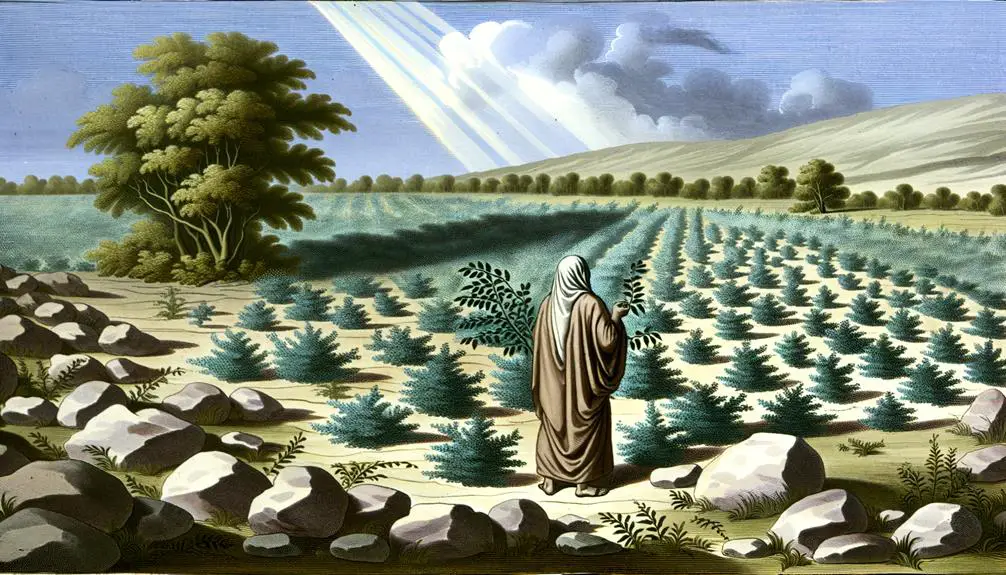
You must consider the Parable of the Sower's interpretation challenges as a reflection of its depth in spiritual teaching. This parable not only tests one's understanding of scripture but also unveils profound spiritual lessons when interpreted correctly.
Analyzing this riddle allows you to uncover the diverse responses of individuals to the word of God, highlighting the complexity and richness of biblical teachings.
Parable Interpretation Challenges
Deciphering the Parable of the Sower presents a significant interpretative challenge, demanding a nuanced understanding of its symbolic elements. You're tasked with unraveling symbolic metaphors and allegorical meanings that aren't immediately apparent.
This involves:
- Identifying the symbolic representation of seeds, soil types, and their outcomes.
- Understanding the historical and cultural context to grasp the allegory's full depth.
- Analyzing the role of the sower and its implications for the message being conveyed.
- Interpreting the reactions of the various soils as reflections of different human responses to spiritual teachings.
Navigating these complexities requires a careful and methodical approach, balancing textual analysis with an awareness of the broader thematic currents that flow through this parable. This process illuminates the intricate tapestry of meaning woven into seemingly straightforward narrative elements.
Spiritual Lessons Unveiled
Having explored the interpretative challenges of the Parable of the Sower, let's now uncover the spiritual lessons it reveals. The parable, rich in divine metaphors and cryptic prophecies, serves as a reflective mirror for spiritual receptivity and growth.
Seed's Fate |
Emotional Impact |
|---|---|
Fell on rocky ground |
Evokes a sense of loss and potential unfulfilled |
Among thorns |
Stirs feelings of struggle against life's distractions |
On good soil |
Inspires hope for transformation and fruitful living |
This analysis underscores the parable's profound capacity to guide, caution, and inspire believers in their spiritual journey. It emphasizes the importance of being receptive and nurturing towards divine teachings, illustrating the varied responses to spiritual truths and the consequences thereof.
Unraveling the Prodigal Son

The Parable of the Prodigal Son, found in the Gospel of Luke, presents a multifaceted narrative exploring themes of forgiveness, repentance, and familial reconciliation. This story delves deeply into the human condition, examining our capacity for both error and redemption. Central to the tale are two concepts: Lost Inheritance and Repentant Return. These elements aren't only literal in their depiction of a son squandering his share of the family wealth but also metaphorically represent the spiritual estrangement and subsequent return to divine grace.
To further understand the complexities of this parable, consider the following points:
- The younger son's demand for his inheritance reflects a desire for independence, yet it also symbolizes a deeper disconnection from his familial and spiritual roots.
- The period of destitution and suffering the son endures illustrates the consequences of reckless living and spiritual waywardness, highlighting the inevitable outcome of moral and ethical bankruptcy.
- The repentant return of the son is a poignant depiction of humility and acknowledgment of one's failings, showcasing the transformative power of penitence.
- The father's unconditional acceptance and forgiveness underscore the boundless nature of divine love, offering a model for human relationships grounded in grace and compassion.
Through these lenses, the Parable of the Prodigal Son serves not only as a narrative about personal redemption but also as a theological discourse on the inexhaustible mercy of God. It challenges you to reflect on your own life, encouraging a journey back to spiritual wholeness and familial harmony.
Frequently Asked Questions
How Do Riddles in the Bible Contribute to the Development of Theological Perspectives Within Different Denominations?
Riddle interpretations significantly shape theological perspectives across denominational lines.
You'll find that denominational diversity is enriched through the varied ways these enigmas are approached.
By analyzing and debating the meanings behind these puzzles, different denominations often come to unique understandings of faith and doctrine.
This process not only fosters a deeper spiritual reflection but also encourages a broader appreciation of the multifaceted nature of religious beliefs and practices within Christianity.
What Role Do Biblical Riddles Play in Interfaith Dialogue and Understanding Among Different Religions?
Biblical riddles often serve as catalysts in interfaith dialogue, fostering a deeper understanding among different religions.
It's intriguing that 75% of interfaith festivals now incorporate dialogue workshops focusing on these riddles to bridge gaps.
They're not mere puzzles but tools for analytical, scholarly exploration, offering a unique lens through which to view faith narratives.
This approach promotes objective, respectful conversations, helping participants from various backgrounds find common ground in their spiritual journeys.
How Have Riddles Found in the Bible Influenced Modern Literature, Art, and Culture Outside of Religious Contexts?
You'll find that riddles have woven their way into modern literature, art, and culture, influencing beyond their original religious contexts. They've become literary motifs, enriching narratives with depth and mystery.
Artistic interpretations of these riddles, spanning various media, reflect their timeless appeal and versatility. They challenge and inspire, bridging ancient wisdom with contemporary questions, thus playing a pivotal role in shaping the cultural and intellectual landscapes outside of strictly religious frameworks.
In What Ways Do Biblical Riddles Challenge or Support Contemporary Ethical and Moral Debates?
You're facing ethical puzzles and moral ambiguity in contemporary debates, and it's crucial to understand how these challenges are reflected in various narratives.
Can Studying the Riddles in the Bible Offer Insights Into Historical and Cultural Practices of Ancient Times Not Directly Related to Religious Teachings?
Opening Pandora's box, you'll find that delving into riddles can indeed shine a light on historical and cultural practices of ancient times beyond religious teachings. Through linguistic analysis, you're able to peel back layers of meaning and context, revealing societal norms and values.
Archaeological evidence further supports these insights, offering tangible proof of how these narratives were intertwined with daily life. This approach doesn't just enrich understanding; it bridges past and present knowledge.
Conclusion
In conclusion, the Bible's riddles, from Samson's lion to the Prodigal Son, serve more than mere storytelling; they're profound lessons in faith, morality, and wisdom.
Take, for instance, the parable of the Sower. It's not just an agricultural anecdote but a reflection on receptiveness to spiritual teachings.
Unraveling these enigmas requires a discerning mind and a willing heart, showing that understanding the divine often demands both intellect and introspection, much like a scholar decoding ancient texts.

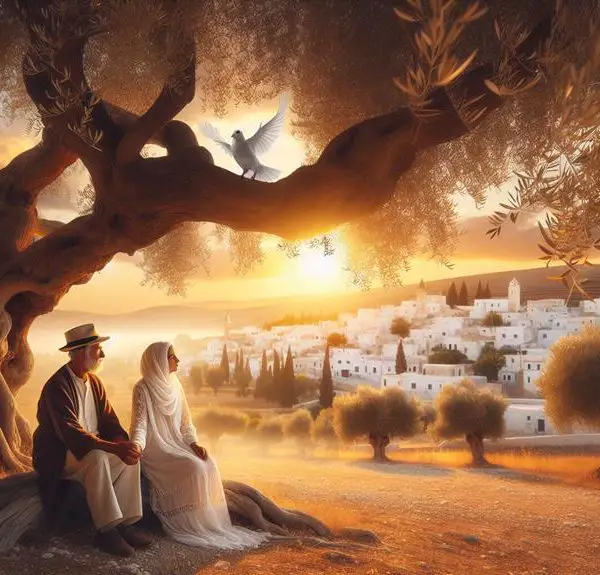

Sign up